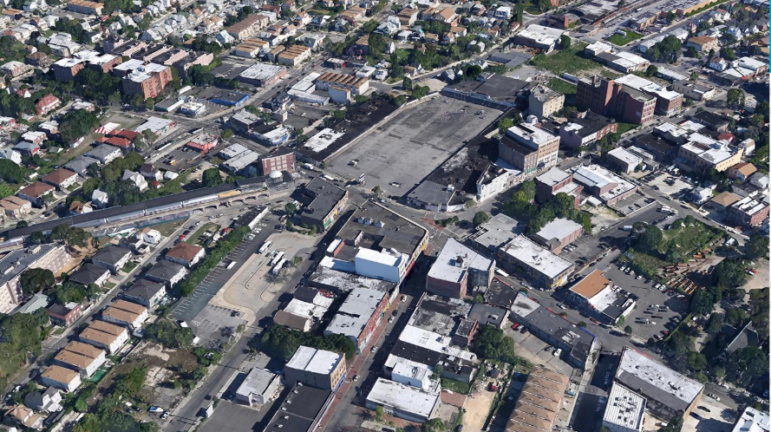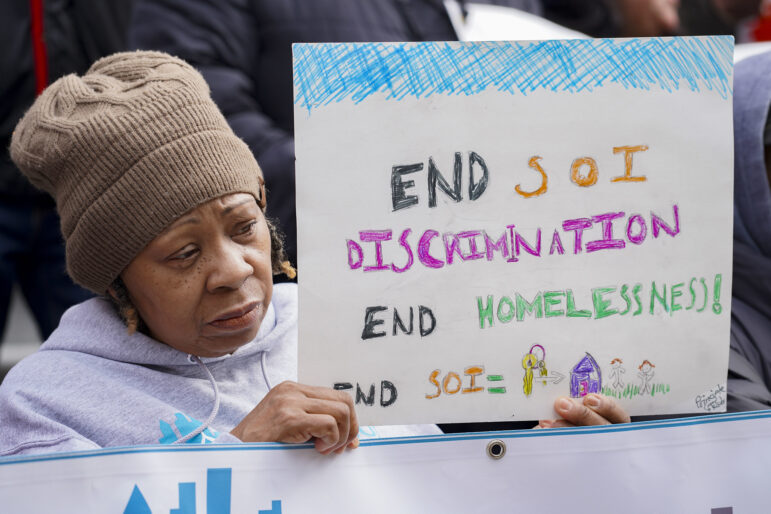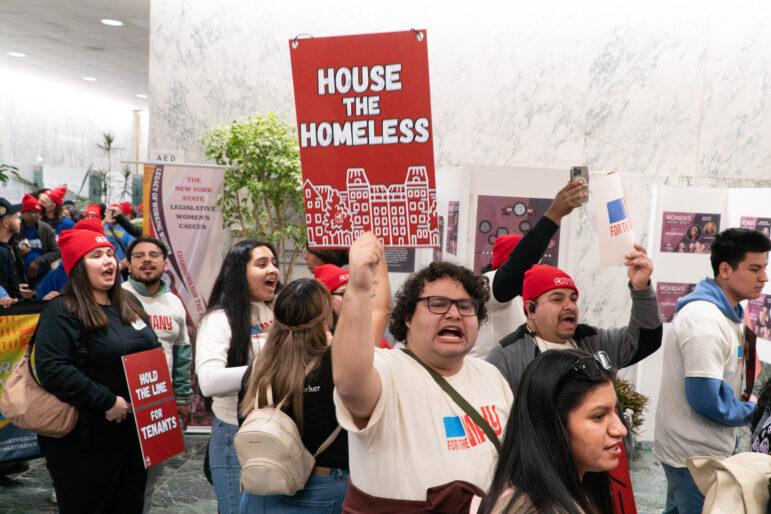
EDC
The plan would rezone 22 blocks in the center of the neighborhood, an area now dominated by a large parking lot.
The de Blasio administration’s proposal to rezone downtown Far Rockaway continued its relatively quiet path toward likely approval on Wednesday, as the City Planning Commission heard a handful of opposing voices at a public hearing on the plan.
The proposal, backed by the city’s Economic Development Corporation, would rezone a 22-block area in the remote Queens neighborhood to increase residential density and create new commercial opportunities, apply the mandatory inclusionary housing requirements to the rezoned blocks and dispose of city property to developers.
Among the 11 neighborhoods that the city at one time targeted for a rezoning, Far Rockaway is the most remote, a community at the city’s extreme southeasten end. That distance might explain the relative lack of neighborhoods voices in the room on Wednesday.
The primary speakers in favor of the rezoning were city agencies—the Department of Housing Preservation and Development, the Department of Small Business Services, the Department of Transportation. The case for the rezoning is that Far Rockaway has potential to house more residents and support a healthier business district but denser development and new investment are necessary to fulfill that promise.
A small number of area residents came forward Wednesday to oppose the plan. Eugene Falik of the Bayswater Civic Association questioned the purpose of the plan. “Is it to revitalize the village [of Downtown Far Rockaway] or is it to build housing, regardless of the negative impact of housing on Far Rockaway?” he asked. “Will you dump on us again?” Falik’s argument, articulated by others earlier in the process, is that the peninsula was harmed by urban renewal projects that concentrated large numbers of low-income residents in an area with relatively few resources.
The inclusion of affordable housing in the plan, for Falik, suggests a repeat of past mistakes. “In order to have a successful business district, you need people with disposable income. There are such people in the Rockaways,” he continued. Right now those more affluent residents shop in the Five Towns, not the downtown area, but they might shift if the plan tried to accommodate them. “We need the ability to get there. We need parking.”
Nicole Garcia, a DOT official, testified later that the municipal parking lot within the rezoning area on an average day sees only 45 percent of its spaces used, and had only five applicants for quarterly parking permits, suggesting little demand for parking.
Resident Allison Jeffrey spoke in opposition of a plan to sell a city-owned lot on the corner of Augustina Avenue and Nameoke Street to a private developer. Instead, she and other neighbors want to turn it into a community farm. Jeffrey highlighted the lack of healthy, organic produce in the area. “You cannot give away this land,” she said. “We just want a place where we can farm together so we can change the direction of this food desert.”
Michael DeFreitas, a member of 32BJ, told the commission that the rezoning “can be a very good thing for downtown Far Rockaway” if developers on the largest sites make a commitment to paying prevailing wages to building-services workers.
The idea is winding its way through the city’s Uniform Land-Use Review Procedure, or ULURP, which governs consideration of changes to the zoning map or disposition of city property. Community Board 14 and the Queens Borough president both approved the plan, with reservations, in advisory votes.
The City Planning Commission, which will soon hold a “review session” on the proposal before voting, has a binding vote, as does the City Council—which will take up the proposal next—and mayor.









